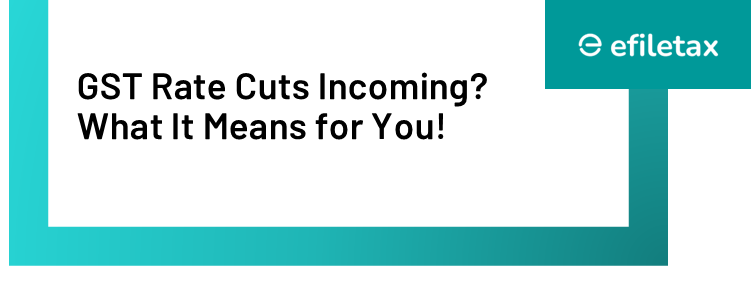
GST Rate Cuts Likely Soon: What It Means for You
Finance Minister Nirmala Sitharaman recently informed the Rajya Sabha that a reduction in Goods and Services Tax (GST) rates is under discussion. The GST Council is actively working on rationalising the tax slabs to simplify compliance and reduce the overall tax burden. With the average tax rate already down to 11.3% from 15.8% in the previous indirect tax system, further reductions may be on the horizon.
Why is GST Rationalisation Needed?
Since its introduction in 2017, GST has undergone multiple revisions to address concerns from businesses and consumers. Some of the key reasons for rationalising tax rates include:
- Reducing Complexity: Currently, GST has multiple slabs (5%, 12%, 18%, and 28%). Simplifying this structure can improve compliance and reduce classification disputes.
- Boosting Economic Growth: Lower tax rates can encourage consumer spending and business expansion, ultimately increasing tax revenue.
- Addressing Industry Concerns: Several industries, including healthcare and insurance, have long sought GST relief to make essential services more affordable.
Potential GST Rate Changes
FM Sitharaman indicated that the GST Council is considering reducing the number of tax slabs. A single-rate structure, or at least fewer slabs, is being discussed. This would mean:
| Proposed Change | Current System | Expected Impact |
|---|---|---|
| Merging 12% and 18% slabs | Multiple slabs create confusion | Simplified structure, fewer disputes |
| Lowering 28% slab on select goods | Luxury items taxed at highest rate | Boosts affordability, increases demand |
| Reducing GST on insurance premiums | 18% GST on health & term insurance | Encourages more people to buy insurance |
Latest GST Council Discussions
The December 21, 2024 GST Council meeting included discussions on key reforms, including a possible reduction in GST on health and life insurance policies. However, no final decision was reached. The Group of Ministers (GoM) recommended a GST exemption for pure term-life insurance and senior citizens’ health insurance policies, estimating a revenue impact of ₹200 crore and ₹3,000 crore, respectively.
The GST Council operates under Article 279A of the Constitution, ensuring that every decision is a collective effort involving state finance ministers. This collaborative approach ensures balanced policy-making but also means that changes take time to be implemented.
What This Means for Businesses and Consumers
- Lower tax rates = More savings
- Businesses will have reduced compliance burdens, leading to improved cash flow.
- Consumers may see lower prices on goods and services.
- Improved Insurance Affordability
- If GST on health insurance is reduced, more people may opt for coverage, benefiting the insurance sector and public health.
- More Simplified GST Structure
- A single or fewer slabs will make tax filing easier for businesses, reducing errors and disputes.
Final Thoughts
With tax rationalisation on the agenda, businesses and taxpayers should stay updated on the next GST Council meeting’s outcomes. While the focus remains on easing compliance and lowering tax rates, state finance ministers and industry stakeholders will play a crucial role in shaping the final decision.